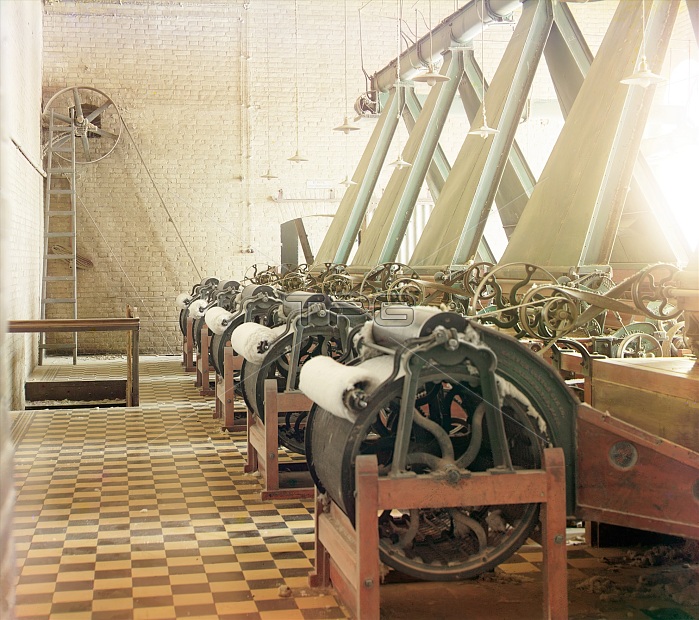
Cotton textile mill interior with machines producing cotton thread, probably in Tashkent, between 1905 and 1915. The location, though unidentified, is most likely in Tashkent which is known for textile production. Because of the warm, dry climate, Central Asia - and particularly Uzbekistan - was an ideal location for growing and processing cotton for the entire Russian empire. Russian chemist and photographer Sergey Prokudin-Gorsky (1863-1944) was a pioneer in colour photography which he used to document early 20th-century Russia and her empire, including the vanishing way of life of tribal peoples along the Silk Route in Central Asia. In a railway-carriage darkroom provided by Czar Nicholas II, Prokudin-Gorsky used the three-colour photography process to record traditional costumes and occupations, churches and mosques - many now Unesco World Heritage sites - as well as modernisation in agriculture, industry and transport.
| px | px | dpi | = | cm | x | cm | = | MB |
Details
Creative#:
TOP29697814
Source:
達志影像
Authorization Type:
RM
Release Information:
須由TPG 完整授權
Model Release:
Not Required
Property Release:
Not Required
Right to Privacy:
No
Same folder images:

 Loading
Loading